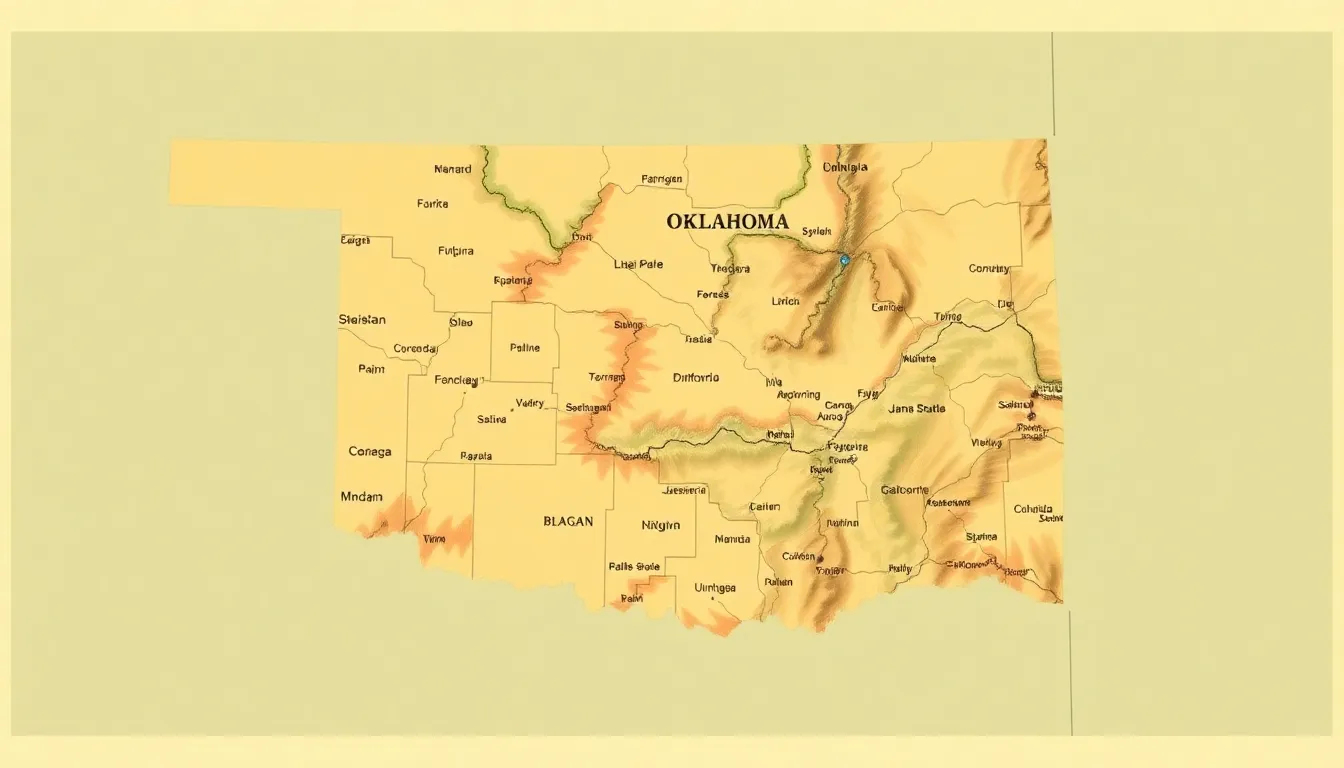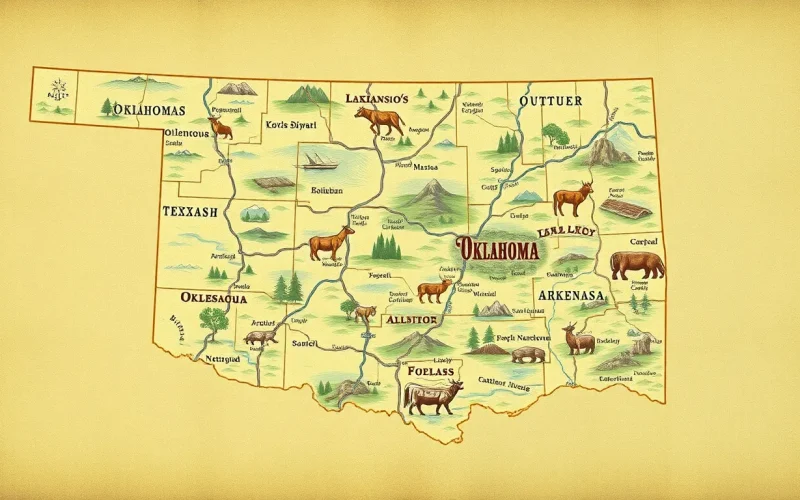Table of Contents
ToggleWhen someone mentions Oklahoma, the first thought might not be where it sits on the map. But this hidden gem of the Midwest deserves a spotlight. Nestled right in the heart of the United States, it’s like the middle child of the country—often overlooked but full of surprises.
Overview of Oklahoma
Oklahoma lies in the South Central region of the United States. It borders Texas to the south and has Arkansas to the east, Missouri to the northeast, Kansas to the north, and Colorado to the northwest. The state features a diverse landscape, including plains, hills, and forests.
It boasts a total area of 69,899 square miles, making it the 20th largest state in the U.S. Oklahoma’s capital, Oklahoma City, serves as its largest city, with a population exceeding 650,000 residents. Tulsa follows as the second-largest city, known for its rich history and cultural scene.
Oklahoma experiences a varied climate influenced by its geography, having hot summers and relatively mild winters. This weather supports numerous outdoor activities. The state is also recognized for its extensive Native American culture, with 39 distinct tribes residing within its borders.
Visitors often explore attractions such as the Wichita Mountains Wildlife Refuge and the Turner Falls Park. The state’s lakes and rivers provide excellent opportunities for fishing, boating, and hiking. Highway networks connect cities and towns across Oklahoma, making it easily accessible.
Further enriching its appeal, Oklahoma hosts various cultural festivals and events throughout the year. The state’s unique history, from the Dust Bowl to Route 66, showcases resilience and innovation. As a midpoint in the U.S., it serves as a crossroads for travel and commerce.
Geographical Location

Oklahoma holds a central spot in the United States, often considered a bridge between various regions. Its coordinate points range from approximately 33° to 37° N latitude and from 94° to 103° W longitude.
Position in the United States
Positioned in the South Central United States, Oklahoma ranks as the 20th largest state, covering an area of 69,899 square miles. This substantial area allows for a variety of geographical features, including plains, forests, and hilly terrains. The state’s location makes it a hub for travel and commerce. Accessible from all directions, its highways connect major cities and attractions easily.
Neighboring States
Oklahoma shares borders with five states. To the north, it meets Kansas and Missouri, while Arkansas lies to the east. Texas occupies the entire southern border, and Colorado is located to the northwest. Each neighboring state contributes to Oklahoma’s rich cultural mosaic and economic connections. The diversity of nearby landscapes enhances the state’s outdoor experiences and regional interactions.
Major Cities in Oklahoma
Oklahoma hosts several vibrant cities, each contributing significantly to its cultural and economic landscape.
Oklahoma City
Oklahoma City stands as the state’s capital and largest city, boasting a population of over 650,000 residents. As the heart of Oklahoma, it features dynamic districts such as Bricktown with its entertainment venues and restaurants. The city’s rich history is illustrated through landmarks like the Oklahoma State Capitol and the National Cowboy & Western Heritage Museum. Visitors find engaging outdoor spaces in parks and gardens, including the Myriad Botanical Gardens. Oklahoma City’s economy remains diverse, encompassing sectors like energy, aviation, and healthcare. Events like the Oklahoma State Fair attract thousands each year, showcasing local culture and community spirit.
Tulsa
Tulsa emerges as Oklahoma’s second-largest city, known for its stunning art deco architecture and cultural attractions. With a population nearing 400,000, it serves as a hub for music and the arts, highlighted by venues like the Tulsa Performing Arts Center. The Philbrook Museum of Art, housed in a refurbished villa, showcases an extensive collection of visual arts. Outdoor enthusiasts appreciate the extensive riverfront parks and the Gathering Place, an award-winning public space. The oil industry significantly shaped Tulsa’s economy, but now, various sectors, including technology and healthcare, contribute to its growth. Numerous festivals throughout the year, like the Tulsa State Fair, celebrate local heritage and creativity.
Oklahoma’s Map Features
Oklahoma showcases unique features that highlight its diverse geography and political landscape.
Physical Geography
Physical geography defines Oklahoma’s diverse terrain. The state encompasses plains, hills, forests, and mountain ranges. Notable features include the Ouachita Mountains in the southeastern region and the sandy plains in western areas. Noteworthy, the cross-timbers region separates eastern forested hills from the western prairie lands. Lakes and rivers, such as the Arkansas River and Lake Murray, further enrich the landscape. Elevation varies significantly, with heights reaching over 4,973 feet in the Black Mesa area. This varied geography has created a rich tapestry of ecosystems, supporting numerous wildlife species and outdoor recreation opportunities.
Political Boundaries
Political boundaries shape Oklahoma’s identity within the United States. The state borders Texas to the south and west, Missouri to the northeast, and Kansas to the north. Borders with Arkansas and Colorado form the eastern and western limits, respectively. This strategic location positions Oklahoma as a gateway between regions. Counties within the state feature distinct cultural characteristics, further emphasized in urban centers like Oklahoma City and Tulsa. Officially established statehood occurred in 1907, influencing its growth and development. Oklahoma maintains a unique blend of cultures influenced by neighboring states, enriching its political and social dynamics.
Oklahoma stands out as a vibrant state with a unique blend of culture and geography. Its central location in the United States makes it a crossroads for travel and commerce. The diverse landscapes and rich history provide endless opportunities for exploration and adventure. Major cities like Oklahoma City and Tulsa offer cultural experiences that reflect the state’s dynamic heritage. With its welcoming spirit and variety of attractions, Oklahoma deserves a spot on everyone’s travel itinerary. Whether it’s the stunning natural beauty or the thriving urban centers, there’s something for everyone in this often-overlooked gem of the Midwest.





